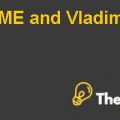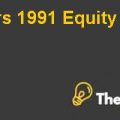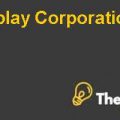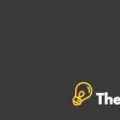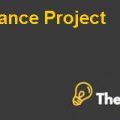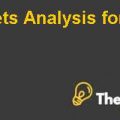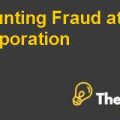
UST, Inc is a very profitable smokeless tobacco company with a low level of debt compared to other companies in the tobacco industry. Installing the case is the recent decision of UST in a significant change of its debt policy, borrowing $ 1 billion to finance its share repurchase program. "Hide
by Mark Mitchell Source: HBS Premier Case Collection 14 pages. Publication Date: May 10, 2000. Prod. #: 200069-PDF-ENG
Debt Policy at UST Inc.
Describe the business of UST? What are the potential sources of risk? How well is UST doing:
The business of UST has a macro level impact on the U.S. smokeless tobacco industry. The industry itself generated $2 billion revenue in the fiscal year 1998. The customer base is spread over five million moist smokeless tobacco consumers and seven million chewing tobacco consumers. UST is the major player in this market as it holds the maximum share in this market, specifically in the segment of moist smokeless tobacco. As per USDA reports, moist smokeless tobacco is the fastest growing segment of overall tobacco industry, whose volume increase 3.7% annually since last 17 years, however, there is a decline of 2% annually in cigarettes’ volume in the same period. Various factors contributing towards the growth of moist smokeless tobacco segment include increased bans on smoking, thus switching consumers to smokeless tobacco, consumers perception of moist smokeless tobacco to be less risky, its price being less expensive than cigarettes based on average usage and shifts over smokeless tobacco from loose leaf chewing tobacco. UST hold its dominance in the market and demonstrates it by controlling approximately 77% of the market.
Risk:
Currently, UST’s share of market is threatened by price-value competitors in recent years, and it forces UST’s management to take actions. UST has been growing primarily through innovations in forms and flavors coupled with price increases but despite its history of expanding smokeless tobacco industry through innovations, UST had recently been criticized for reduction in innovation. UST is faced with a risk of emerging competition in its market area from the price-value competitors. UST is trying to control this market by a strategy of innovation, as in 1997, rather than cutting prices, UST introduced new brand of tobacco, Red seal brand, to compete price-value brands. However price-value competitors have already gained 9% market share. Resignation of key executives had also been an issue which is due to a dispute over company’s actions as president resigned UST due to his differences in the strategic direction. A prime issue in Tobacco market is of restrictions on advertising Tobacco products, however, UST went for free samples, mail-in rebates, and promotional sales. Simultaneously, litigation issues are also quite often in the tobacco industry but UST being a smokeless tobacco manufacturer is not as much exposed as cigarette manufacturers.
Performance:
To observe, that how well has UST performed, we can have a look at its last 11 years performance in the form of ratios and compare its ratios with the mean and median of other comparable companies. Simultaneously, we could compare UST’s ratios with the benchmark ratios for AAA credit rating.
It could be graphically seen in the graph below that UST not only outnumbers all of its comparable companies in all ratios but also clears the benchmark level for AAA rating. It should also be noted that all this performance is achieved without taking high leverage levels.
Describe UST's current capital structure. Is it a good capital structure for UST?:
Currently, capital structure of UST is heavily supported by UST’s equity, as observable in the following graphs.
Currently, UST is gearing with 82% of equity based capital while the remaining 18% is leveraged capital, which is 100% based on long term debt and there is no short term debt by 1998. Generally, we expect such high level of equity in a capital base only through profit reinvestment / retention however this is not the case with UST. UST has been continuously paying dividend since many years and has also done share repurchase exercises in previous years. This also substantiates that UST is quite a profitable company, who is capable to generate strong equity year after year, even after generous payment approach. When compared with other companies in industry, UST clearly distinguishes itself by maintaining a strong capital base with very low level of debt as compared to other companies who have high level of debt. Total debt held by other companies lie in the range of 65.7% (median) to 65.9% (mean) whereas UST’s total debt is only 17.6% of the capital, which is solely long term. This capital structure is not just a temporary position; rather this has been consistently maintained since years. This is observable from the capital structure position since last 5 years and last 10 years. UST’s 10 years ratio is 83.7% equity while 5 years ratio shows 70% of equity in capital.
Capital structure of UST is feasible for it as it is currently free from sharing large proportion of its profits with the lenders in form of interest. Comparison of UST with other players in the industry also indicates that UST is outperforming all of them and hence the low leveraged capital structure of UST is supporting its performance more properly rather as compared to other highly leveraged tobacco firms.
Following comparison proves UST’s performance as compared to the group.
- UST’s gross profit margin is 80%; median of other companies is 28%.
- UST’s average return on assets is 54%; median of other companies is 3.1%.
This is just a sample partial case solution. Please place the order on the website to order your own originally done case solution


